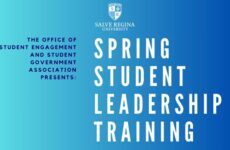By Stephanie Menders | Staff Writer
A fluorescent green screen that reads, “Rated R, for sexual content and excessive violence,” appears preceding the start of a film, warning viewers that the content they are about to see might be upsetting or offensive. Audiences accept these warnings without a second thought. But what happens when those warnings are given in a college classroom?
Around a decade ago, disclaimers began to surface on women’s blogs for content that might arouse traumatic memories of assault or domestic violence. These disclaimers were quickly coined as trigger warnings. Often, when a sensitive topic is going to be discussed or read about, or perhaps depicted in a video, a trigger warning will be issued. In a class, trigger warnings might be verbalized immediately before the sensitive topic is presented or the day prior. It may also come in an email to the class, on a syllabus or in a course description. Warnings can be as brief as one sentence that simply states: this is what will be covered in the following lesson.
In recent years, trigger warnings have caused opposition on college campuses. The issue is whether faculty should let student’s know, depending on their personal history or circumstances, that it is possible that these experiences will trigger an aversive emotional response.
According to an article in University Business magazine, in early 2014, the Office of Equity Concerns at Oberlin College in Ohio issued guidelines asking faculty to be sensitive to traumatized students and to adjust their teaching accordingly. Oberlin’s decision was the first case of a university mandating the use of trigger warnings. As a result, the decision has prompted other universities to seriously consider the issue.
Salve Regina University maintains a 13:1 student to faculty ratio with the goal of creating a comfortable, engaging and inclusive learning environment. However, for some students, comfort, engagement and inclusion are now in a conflict that is highlighted by the trigger warning debate.
Junior French major and Political Science/Religious and Theological Studies minor Zachariah Russell believes that trigger warnings are a symptom of a larger problem in higher education. “Some students have been sheltered so much that their ideas of reality are so skewed,” Russell says. “Anything that intrudes on that is deemed offensive and they don’t want to listen.”
A popular argument against issuing trigger warnings in college classrooms is that it coddles students who should be learning to deal with provocative content in a mature manner. “If a professor warned me about a video’s content I would wonder why they were babying me,” Russell says.
Another concern with trigger warnings is that they hinder students’ engagement with topics and, as a result, negatively impact their education. Russell argues that trigger warnings create an, “artificial bias.”
Russell says that if a student is warned about content before it is presented, he or she is being told how to feel about it and might lose the raw, initial reaction that strengthens their emotional skills and morality. “It’s important to look at that initial reaction and refine it in a way that is constructive, in a way that can provide intellectually stimulating conversation,” explains Russell. “That’s difficult to do, but that’s something that we need to learn when we’re in college.”
In September, the Chronicle of Higher Education reported that the senate at American University, “unanimously adopted a free-speech resolution that discourages instructors from granting students’ requests to be shielded from certain readings or discussions.” Although the Provost of American University backed the resolution, the student body is attacking it. Furthermore, the current president of American University’s student government ran on a platform that included a push for trigger warnings on syllabi.
In fact, students across America are advocating for trigger warnings to be issued in college classrooms to ensure a safe and inclusive learning space. Even when college administrations may not see the value in issuing trigger warnings, student proponents are becoming increasingly outspoken on the issue.
Courtney Schramm, a junior Social Work major at Salve Regina University, believes that trigger warnings should be issued in college classrooms in consideration of those who continuously battle against post-trauma. “I think being cognizant of other people’s emotions is always important,” Schramm says. “If you’ve never been in that person’s situation or you’ve never been a victim, then how can you say that a trigger warning is oversensitive?”
As a social work major, Schramm says that she often thinks about the weight that words can carry, as interacting with clients has enlightened her view of trigger warnings. “You never know what will be a trigger for someone, a client, whether a child or an adult, or anybody,” says Schramm. “It’s the worst feeling to mistakenly say something offensive and then look back on it and regret saying it.”
Schramm says that this sentiment should carry over into college classrooms at Salve Regina, which, like all universities, consists of students from different countries, religions, experiences, and ethnicities. “In college, you never know what backgrounds people come from,” Schramm says. “It’s important to be aware of that.”
Trigger warnings can be a challenging topic for college administrations to take a stand on due to its varied relevance among disciplines. For example, a student who majors in business or economics may not be concerned about trigger warnings. However, Salve Regina University adheres to a liberal arts style education, where students are required to take core classes in social sciences and humanities. “A trigger warning might come as something unexpected to a business major who might have to take a core class in psychology,” Schramm says.
Dr. Arthur Frankel, a professor of psychology at Salve Regina University, prompts his students to consider the use of trigger warnings in college classrooms in his Psychology of Prejudice course. “From discussion in class, I get the sense that students appreciate trigger warnings,” Frankel says.
Collectively taking part in an experience, whether it be watching a movie, reading a blog or taking a class, subjects everyone to the same content. However, just as two viewers may have varying interpretations of a film, two students in a classroom can have different reactions to a topic. Frankel says that in his experience, it is possible that only one or two students may find the absence of a trigger warning problematic in a full Salve Regina class size of 35. “So when we talk about trigger warnings we are talking about doing what we think is best for a relatively small percentage of the students,” Frankel says. “But that doesn’t necessarily mean that they shouldn’t be offered.”













